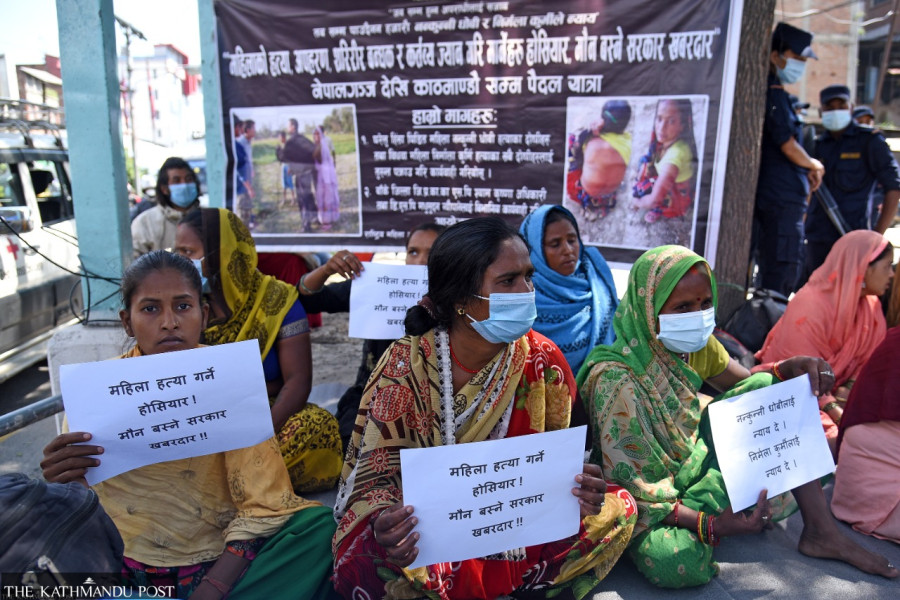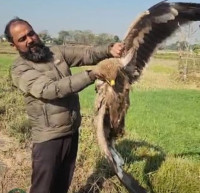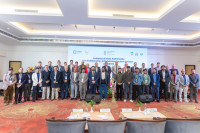National
Government is ignoring Nepalgunj protesters’ demands, activists say
Protest leader Ruby Khan, who is on a hunger strike, was taken to TU Teaching Hospital after condition worsened.
Binod Ghimire
They walked all the way from Nepalgunj to Kathmandu for 20 days seeking justice for two women of Banke district. One of the women was killed and another remains missing since 2010.
It was after the local government and authorities had long ignored their demands for justice for the victims that they started a sit-in at Maitighar from October 8—two days after landing in the federal Capital. However, in the ten days since their protest for justice began, the government has only given them pain instead of listening to their demands for fair investigations into the two cases, activists say.
Last month, twelve women along with two men had started their journey on foot to Kathmandu from Nepalgunj to draw the attention of the federal government for fair investigations into the death of Nakunni Dhobi and disappearance of Nirmala Kurmi, following the indifference of the local administration. Two others joined them in Kathmandu on October 6.
They decided to march over 500 kilometres to the federal Capital after the Banke district police refused to investigate the alleged perpetrators, ignoring their 19-day-long sit-in at the local district administration office. “The central government is no different from the local government,” Sakina Teli, one of the protesters, told the Post. “It wants to dismiss our protest but we won’t give up until our demands for justice are met.”
Nakunni, 38, was found dead under suspicious circumstances at her home on July 20 in Ward 2 of Janaki Rural Municipality in Banke. Nirmala, 52, had gone missing in January 2010 from the same rural municipality. Her disappearance came just two years after her two teenage sons were murdered within the span of a week. Neighbours and villagers say Nirmala owned a great deal of property, making her disappearance and the murder of her two sons suspicious. But police never took the case of her disappearance seriously.
The government’s attempt to dismiss the protest started the same day when 16 of the protesters started the sit-in. The police arrested 13 of them on October 8 while they were having their dinner at Maitighar. Although 12 of them were released within a few hours, Ruby Khan, who was leading the protest, was held in secret detention.
The Metropolitan Police Circle, Sorhakhutte had first arrested her along with the fellow protesters. She was then transferred to the Metropolitan Police Circle, Singha Durbar and was flown to Nepalgunj on October 10 after a polyandry case was lodged against her. Khan and those who know her claim the case was trumped up in an attempt to weaken the protest.
Following the police reluctance to make Khan public, advocate Mohna Ansari, a former member of the National Human Rights Commission, moved the Supreme Court on October 10 with a habeas corpus petition demanding her immediate release. The court ordered the Metropolitan Police Circle, Sorhakhutte to present her before the court within 24 hours. However, the police said they were unaware of her whereabouts.
Then on October 12, the Nepal Police and the Attorney General’s Office were ordered to produce Khan before the court by 11 am on October 14. This time, she was presented before the court and released the same day.
Khan launched her fast-unto-death on the very day of her arrest and has said she won’t eat anything until the alleged perpetrators and the police officials who are trying to protect them are punished. She was taken to the Tribhuvan University Teaching Hospital, Maharajgunj on Saturday as her health condition worsened.
“She is weak but the doctors say her condition is stable,” said Teli.
In an attempt to intimidate the protesters, their family members in Banke are being threatened by goons, according to Ansari. She said the family members of some of the protesters were beaten up while others have been threatened with consequences if the protests continued.
The protesters have accused the government of working to protect the perpetrators. The only occasion the government tried to reach out to the protesters was on October 9. Officials from the Ministry of Home Affairs at a meeting with the protesters asked them to end the protest. They had promised that the local administration would look into their demands and take necessary action. However, the protesters refused.
“Today [Sunday afternoon], Minister for Home Affairs Bal Krishna Khand told me that the government was preparing to form a committee to probe the two incidents,” said Ansari. “I told him that the ministry should be communicating with the protesters.”
Brihat Nagarik Aandolan, a civic movement, is the only organisation that is supporting the protest. Even the National Women’s Commission hasn’t paid any attention to their protest.
“I have no information about any action from the commission on the issue,” Shyam Prasad Shrestha, spokesperson for the commission, told the Post. The civil society members who are with the protesters say the government is underestimating the protest launched by the poor and the marginalised.
“The government hasn’t taken the protest seriously. It still feels it can be dismissed,” Sanjeev Uprety, a member of the Brihat Nagarik Aandolan, told the Post. “This is the only reason why it hasn’t even started a dialogue with the protesters.”




 7.12°C Kathmandu
7.12°C Kathmandu















